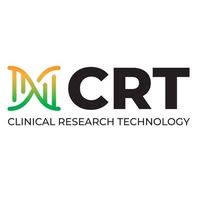/ Not yet recruitingN/AIIT PrEmenopausal bReaSt cancEr adjuVant thERapy Benefit According to OncotypE DX Test
Multicentric retroprospective observational study to collect outcome in premenopausal breast cancer patients who undergone the 21-multigene assay Oncotype DX from 1st January 2013 to 31st December 2022 and adjuvant treatment.
A Single-arm Phase II Study of Cetuximab Plus Platinum and Taxane-based Chemotherapy Followed by AVElumab and Cetuximab As First-line Therapy for Recurrent/metastatic (R/M) Head and Neck Squamous Cell Carcinoma (HNSCC) Patients with PD-L1 Combined Positive Score (CPS)≥1≤19: the Immunotherapy Sequenc
This phase II interventional clinical trial aims to evaluate whether combining cetuximab and avelumab, after three cycles of platinum and taxane-based chemotherapy, can improve treatment outcomes for patients with recurrent or metastatic (R/M) head and neck squamous cell carcinoma (HNSCC) with a PD-L1 combined positive score (CPS) between 1 and 19. Specifically, the study seeks to determine if this approach can increase the 6-month progression-free survival (PFS) rate from 40% to 55%.
The trial will include adult patients with confirmed R/M HNSCC, who have not previously received systemic therapy for their advanced disease. By testing this sequential treatment strategy, researchers hope to improve outcomes for this specific patient population, which has shown poorer responses to existing immunotherapy options compared to those with higher PD-L1 expression levels.
Participants will first undergo an induction phase, consisting of three cycles of chemotherapy with paclitaxel, platinum (cisplatin or carboplatin), and cetuximab. After this initial treatment, they will move to a maintenance phase, where they will receive avelumab and cetuximab every two weeks until disease progression or the occurrence of unacceptable side effects.
The study aims to answer several key questions:
Can this treatment approach improve progression-free survival at 6 months? What impact does it have on overall survival, response rates, and the duration of response? Is this combination therapy safe and well-tolerated? In addition to the treatment itself, participants will be asked to provide blood and tumor tissue samples for translational research, helping scientists better understand how biomarkers influence treatment response. Regular follow-up assessments will also be conducted to monitor disease progression and overall health.
By testing this innovative treatment sequence, researchers hope to bridge the gap between different PD-L1 subgroups, potentially offering a more effective and personalized approach for patients with R/M HNSCC.
/ Active, not recruiting临床2期IIT "NEOadjuvant Plus Adjuvant Therapy with Combination or Sequence of Vemurafenib, CobImetinib, and AtezolizuMab in Patients with High-risk, Surgically Resectable BRAF Mutated and Wild-type Melanoma"
Neoadjuvant plus adjuvant treatment with target therapy and immunotherapy given in combination or sequence may have an anti-tumour activity and may reduce the risk of relapse in patients with high-risk resectable melanoma (stage III B / C / D and oligometastatic stage IV).
100 项与 Clinical Research Technology S.r.l. 相关的临床结果
0 项与 Clinical Research Technology S.r.l. 相关的专利(医药)
100 项与 Clinical Research Technology S.r.l. 相关的药物交易
100 项与 Clinical Research Technology S.r.l. 相关的转化医学







